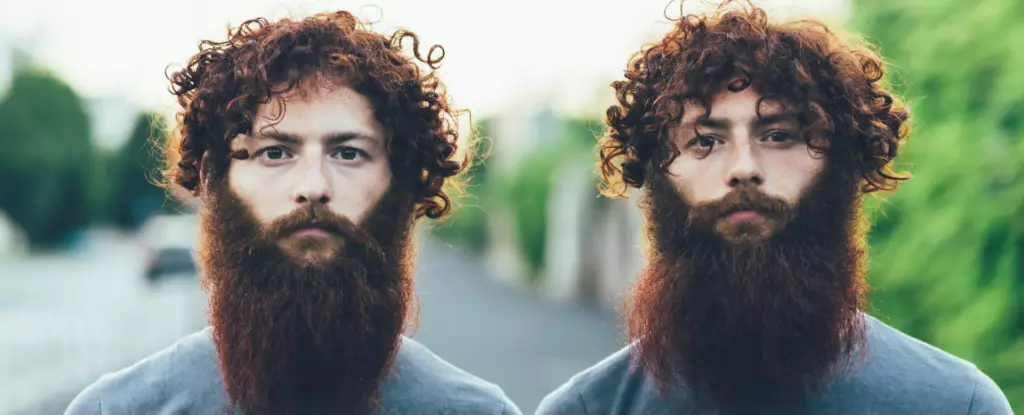The evolution of human grooming rituals has significantly influenced both personal identity and social status throughout history. The care we show toward our hair and nails sheds light on not just cultural norms but also the very human instinct towards self-presentation. In particular, the recent COVID-19 pandemic drew many to a newfound appreciation for hairdressers and nail technicians. The world collectively faced a dilemma during lockdowns: how to maintain appearances without professional help. Even pop icon Taylor Swift took a swing at home hair management, reinforcing our reliance on grooming professionals. This leads us to ponder a provocative question—what if we decided to abandon hair and nail grooming completely? How would our bodies respond?
One of the most intriguing aspects of human anatomy is the continuous growth of hair and nails. On average, hair grows approximately 1 centimeter each month, while fingernails extend nearly 3 millimeters in the same timeframe. For those of us who prefer regular trims, this ongoing growth often goes unnoticed. However, in the absence of grooming, hair and nails can reach astonishing lengths. For instance, Aliia Nasyrova, famously dubbed the Ukrainian Rapunzel, boasts hair that measures 257.33 cm, while Diana Armstrong from the United States holds the record for the longest fingernails at an extraordinary length of 1,306.58 cm.
Yet, while some individuals achieve remarkable growth, most of us require regular haircuts and nail trimming. This raises essential questions about why hair and nails grow at different rates for different people.
At the core of hair and nail growth lies keratin—a fibrous protein essential for the structure of both. The growth process initiates in matrix cells, situated underneath the skin. Nails, for instance, emerge from matrix cells which progressively produce new cells that push older cells forward. This progression enables the consistent growth of nails as newly formed cells slide along the nail bed, which appears pink due to its rich blood supply.
Hair growth follows a similar blueprint, originating from matrix cells that develop into the visible portion of the hair, known as the shaft. Underneath each follicle lies the hair bulb, an area laden with papillae that nourish the follicle with essential blood supply. As cells near the papilla differentiate, they contribute to the hair shaft’s length.
Interestingly, hair growth is cyclical, encompassing four distinct phases: the anagen phase (growth), catagen phase (transition), telogen phase (resting), and exogen phase (shedding). Each follicle exclusively follows its own rhythm of growth, which reminds us of the complex orchestration that keeps our hair intact.
Unquestionably, genetics is a substantial player in determining hair and nail growth rates. Often, families exhibit similar characteristics regarding these aspects. Identical twins, for example, generally show concordance in nail growth rates. Beyond genetics, our age exerts a significant influence as well. Younger individuals typically experience quicker growth rates that gradually slow down as metabolic functions decline with age.
Hormonal changes also wield considerable power over hair and nail growth. For instance, during pregnancy, many women experience an acceleration in hair and nail growth, while fluctuations during menopause can lead to the opposite effect. Stress, too, is not trivial; elevated levels of the stress hormone cortisol may hinder growth.
Nutrition holds a vital place in this discussion; it affects not just the speed of growth, but also the strength of hair and nails. Constructed largely of keratin, hair and nails require a range of nutrients—including amino acids, vitamins, and minerals—to remain healthy. Deficiencies, particularly in iron and zinc, can lead to hair loss and vulnerable nails, underscoring why a balanced diet is crucial for maintaining our grooming standards.
Despite the common belief that hair and nails continue to grow post-mortem, this perception is a myth. In truth, following death, the body undergoes dehydration, causing the skin to retract and creating the illusion of longer hair and nails. This misconception has permeated our culture, possibly inspired by tales of the supernatural, while morticians often address this issue with various techniques.
Ultimately, both in life and in death, hair and nails remind us of our constant need for maintenance and care. Whether through routine grooming or deeper biological cycles, the existence of hair and nails remains an enduring aspect of human experience, illuminating our connection to identity and status amidst the ebb and flow of life.


Leave a Reply